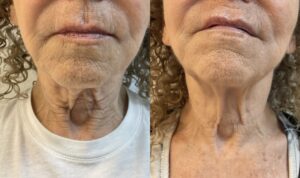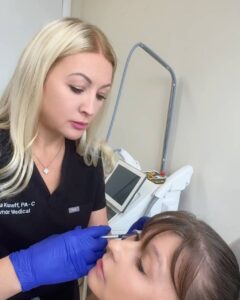We all know that oil and water don’t mix, but did you realize that combining Vitamin C with retinol is a formula for disaster? Choosing the right ingredients for your skin type needs is simply the first step. However, with new product combinations and ingredient breakthroughs surfacing daily, it may be difficult to keep track of which chemicals can and cannot be used jointly. It is vital that all of the items in your routine complement one another so that you can notice results. While we feel that having a well-rounded blend of substances is the key to having amazing skin. Certain combinations can do more damage than good when used concurrently. Continue reading to find out which skincare ingredients you shouldn’t combine.
Retinol + Vitamin C
When Retinol is combined with the following:
- Vitamin C
- Benzoyl Peroxide
- Alpha and Beta Hydroxy Acids
- Glycolic acid
- Salicylic acid
Using these items one after the other, you will experience irritation. If you must use vitamin C in your skincare routine, use it in the mornings and evenings. The ideal approach to utilize acids in conjunction with retinol is to rotate them each evening. Try one evening using retinol.
Another evening using a leave-on acid exfoliator, followed by moisturizer. For oily and acne-prone skin types you may benefit from using an acid-based cleaning solution before applying the retinol, which moisturizer will wipe off.
Vitamin C + Soap Based Cleansers
Applying Vitamin C in the morning is ideal. Although, what you use to cleanse beforehand is as important. A low pH formulated vitamin C will generate better results. Using a soap-based cleanser with a high pH will eventually reduce the skin’s capacity to absorb vitamin C, that is an issue.
You will not only lose out on free-radical defense, which scientists mentioned in The Journal of Clinical and Aesthetic Dermatology. They discovered it ages the skin, and you won’t notice optimal benefits. We suggest cleaning with a salicylic or glycolic-based cleanser in the morning before slathering on Vitamin C to get the most out of your skin and your money.
Salicylic Acid + Retinol + Retinoid
Retinol and retinoid share a family tree but they’re not sisters. A retinoid contains a greater concentration of the active substance (retinoic acid) than retinol. You’ve likely been advised to take a retinoid to decrease the look of fine lines and wrinkles. Salicylic acid, a beta-hydroxy acid that stimulates skin cell turnover, can also be used to keep pores clean in the fight against acne.
Unfortunately, each can dry out the skin alone, so they should be used with caution when mixed.
The danger is overdrying, which can irritate the skin and aggravate the problem. To counteract being too dry, the skin may increase oil production, which can lead to a negative cycle of skin dehydration and breakouts.
Glycolic Acid + Salicylic Acid
The distinction between salicylic and glycolic acid is that salicylic is a beta-hydroxy acid, which is an organic substance that combat wrinkling and peels off skin cells. Glycolic acid is an alpha-hydroxy acid, a chemical ingredient tiny enough to enter the skin and cure acne. This acid works on the skin’s outermost surface, eventually killing dead skin cells. So, unless your skin is very oily we recommend avoiding both salicylic and glycolic acid products on the same day.
Oil-Based Products + Water Based Products
It’s simple grade-school science: oil and water do not mix. Oil repels water, thus when it pertains to skincare, applying an oil-based application will form a coat on your skin that inhibits water-based solutions from entering. If you wish to utilize both solutions in the same regimen, use water-based products initially, then oil-based products.
Niacinimide + AHAS/BHAS
Both niacinamide and AHAs/BHAs can greatly enhance the appearance of the skin, hyperpigmentation, acne, and indications of age, however combining or applying these chemicals may not be beneficial. The pH of acids is 3-4, but niacinamide has a higher pH of roughly 5-7. When paired, niacinamide raises the pH of the acid, making it less potent and less absorbable. This combination may also produce flushing and redness.
Looking To Upgrade Your Skincare Routine?
Glamor Medical in Boca Raton, Florida, provides a number of treatment choices to help you meet your skincare goals. Glamor Medical is a one-stop-shop that provides face treatments such as Hydrafacials and Microneedling. They also provide procedures like botox and laser treatments to help address any flaws in the body. If you’re ready to regain your youthful, glowing skin, schedule your next facial at Glamor Medical.





1 thought on “Skincare Ingredients You Shouldn’t Combine”
Amazing information! We usually do not consider these things whilst doing a skincare regime. Thank you for sharing this information about skincare ingredients. Can you share some useful tips about basic skincare routines?